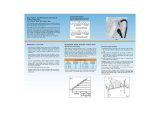
The DEVI
TM
Guarantee
You have purchased a DEVI heating system which we are sure will serve to improve the
comfort and economy of your home.
DEVI provides a complete heating solution with Deviex
TM
heating cables or Devimat
TM
heating mats, Devireg
TM
thermostats and Devifast
TM
xing strips. Should you, against all
expectations, experience a problem with your DEVI heating system, you will nd that
DEVI, whose products are manufactured in Denmark and sold throughout the European
Union, is subject to the standard regulations pertaining to product liability as specied in
EU directive 85/374/CEE as well as all applicable legislation in the individual countries on
the following conditions:
DEVI oers a 10-year guarantee on all Deviex
TM
heating cables and Devimat
TM
heating
mats, and a 2-year guarantee against material defects and production defects in connection
with any other DEVI products.
e guarantee shall be valid only if the GUARANTEE CERTIFICATE is completed
correctly and in accordance with the instructions, and provided the fault is inspected by or
submitted to DEVI or an authorised DEVI dealer.
Please note that the GUARANTEE CERTIFICATE must be completed in English or local
language.
DEVI shall undertake any repair free of charge or supply the customer with a new unit.
Repairs shall be carried out at no further cost to the customer. In the case of faulty
Devireg
TM
thermostats, DEVI reserves the right to repair the unit free of charge and
without any unreasonable delays for the customer.
e DEVI Guarantee shall not cover installations that have been carried out by non-autho-
rised electricians, faults which arise as a result of misuse by other suppliers, damage caused
by third parties, incorrect installations or consequential damage. All work will be invoiced
in full if DEVI
is required to inspect or repair faults that have arisen as a result of any of the above.
e DEVI Guarantee shall not extend to equipment which has not been paid in full.
DEVI will, at all times, provide a rapid, eective and honest response to all queries and
reasonable demands from our customers.
e above guarantee covers product liability only, while purchases are subject to national
legislation.





















